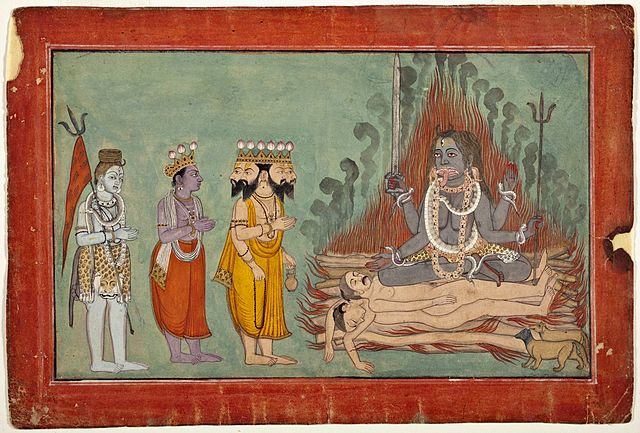
Trimurti/Trideva Creation, Preservation and Destruction; Universe Brahma (creator), Vishnu(preserver), and Shiva(destroyer) Satyaloka abode of Brahma Vaikuntha abode of Vishnu Kailash abode of Shiva Mantra Om Tridevaya Namah Mount Swan (mount of Brahma), Garuda (mount of Vishnu) and Nandi (mount of Shiva) Consort Tridevi which consists of Saraswati (Brahma’s wife), Lakshmi (Vishnu’s wife) and Parvati (Shiva’s wife) The Trimūrti (/trɪˈmʊərti/;[1] Sanskrit: त्रिमूर्ति trimūrti, “three forms”) is the triple deity of supreme divinity in Hinduism[2][3][4][5] in which the cosmic functions of creation, maintenance, and destruction are personified as a triad of deities, typically Brahma the creator, Vishnu the preserver, and Shiva the destroyer,[6][7] though individual denominations may vary from that particular line-up. Brahma is the Hindu creator god. He is also known as the Grandfather and as a later equivalent of Prajapati, the primeval first god. In early Hindu sources such as the Mahabharata, Brahma is supreme in the triad of great Hindu gods which includes Shiva and Vishnu. |
Brahma (god of Vedas), Gyaneshwar (god of Knowledge), Chaturmukha (having Four Faces) Svayambhu (self born), etc, as well as linked to Kama and Hiranyagarbha (the cosmic egg).[6][7] He is more prominently mentioned in the post-Vedic Hindu epics and the mythologies in the Puranas. In the epics, he is conflated with Purusha.[3] Although Brahma is part of the Brahma-Vishnu-Shiva Trimurti, ancient Hindu scriptures mention multiple other trinities of gods or goddesses which do not include Brahma.[8][9][note 1]
Several Puranas describe him as emerging from a lotus, connected to the navel of Lord Vishnu. Other Puranas suggest that he is born from Shiva or his aspects,[11] or he is a supreme god in diverse versions of Hindu mythology.[6] Brahma, along with other deities, is sometimes viewed as a form (saguna) of the otherwise formless (nirguna) Brahman, the ultimate metaphysical reality in Vedantic Hinduism.[9][7]

In Vaishnava Puranic scriptures, Brahma emerges on a lotus from Vishnu’s navel as Vishnu (Mahavishnu) creates the cosmic cycle, after being emerged by Shiva,
F